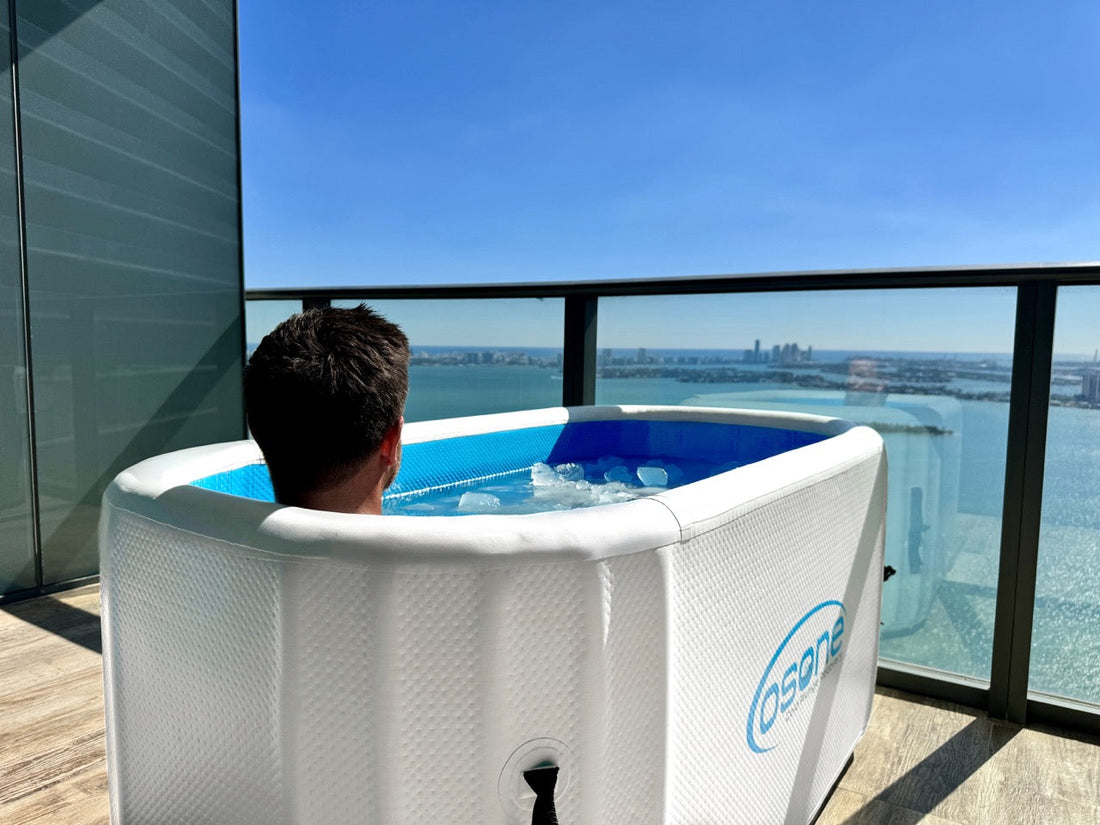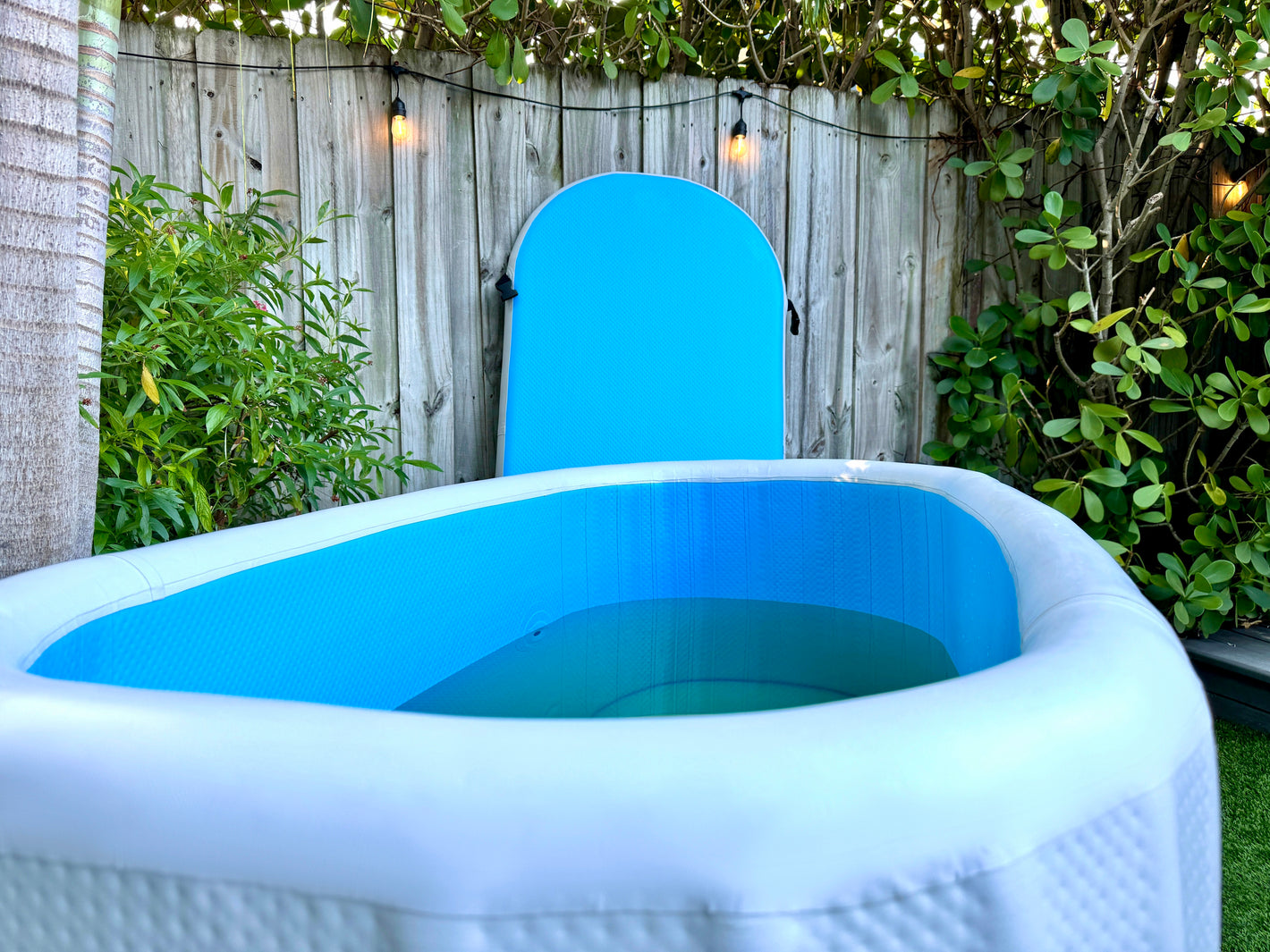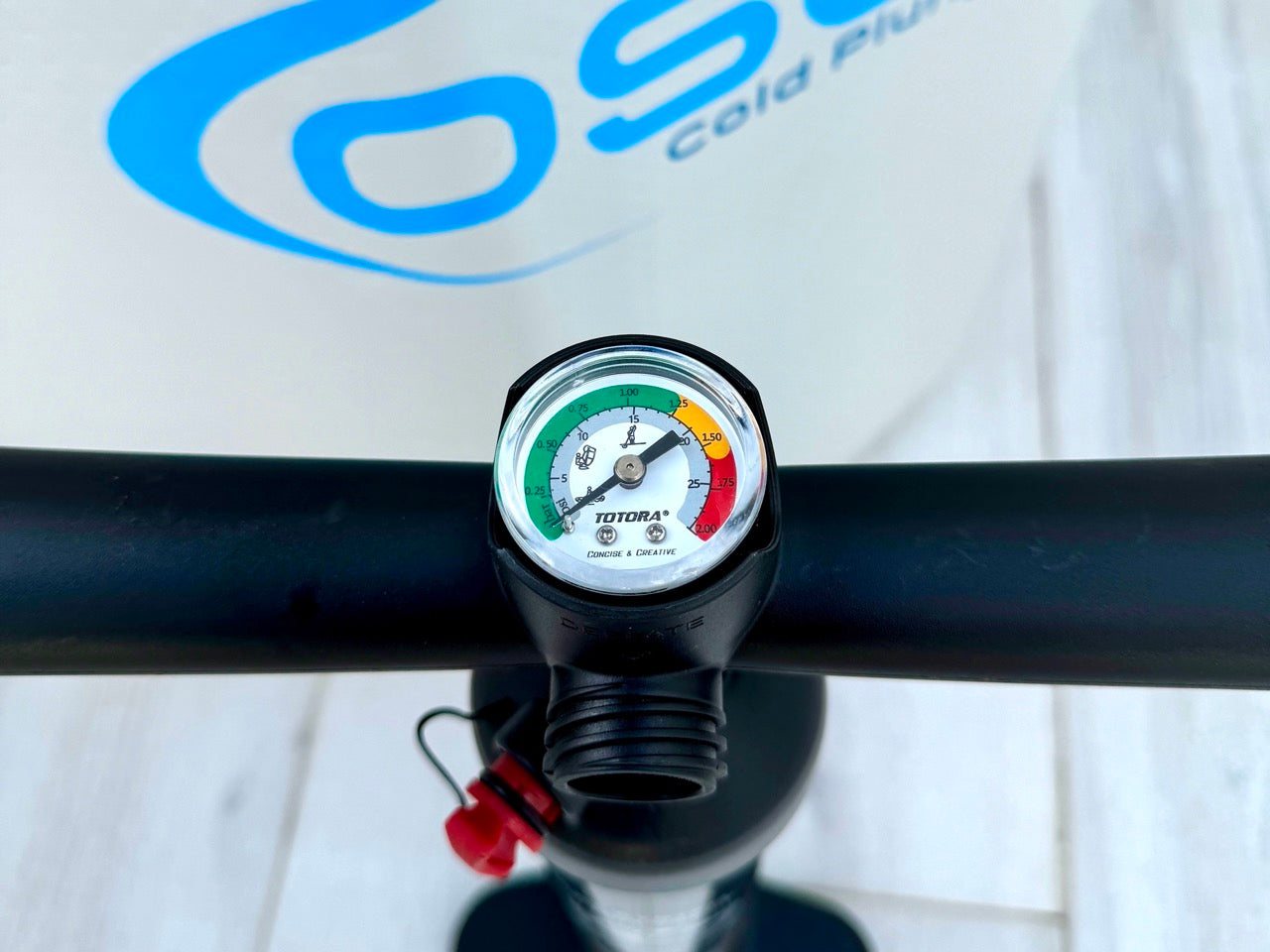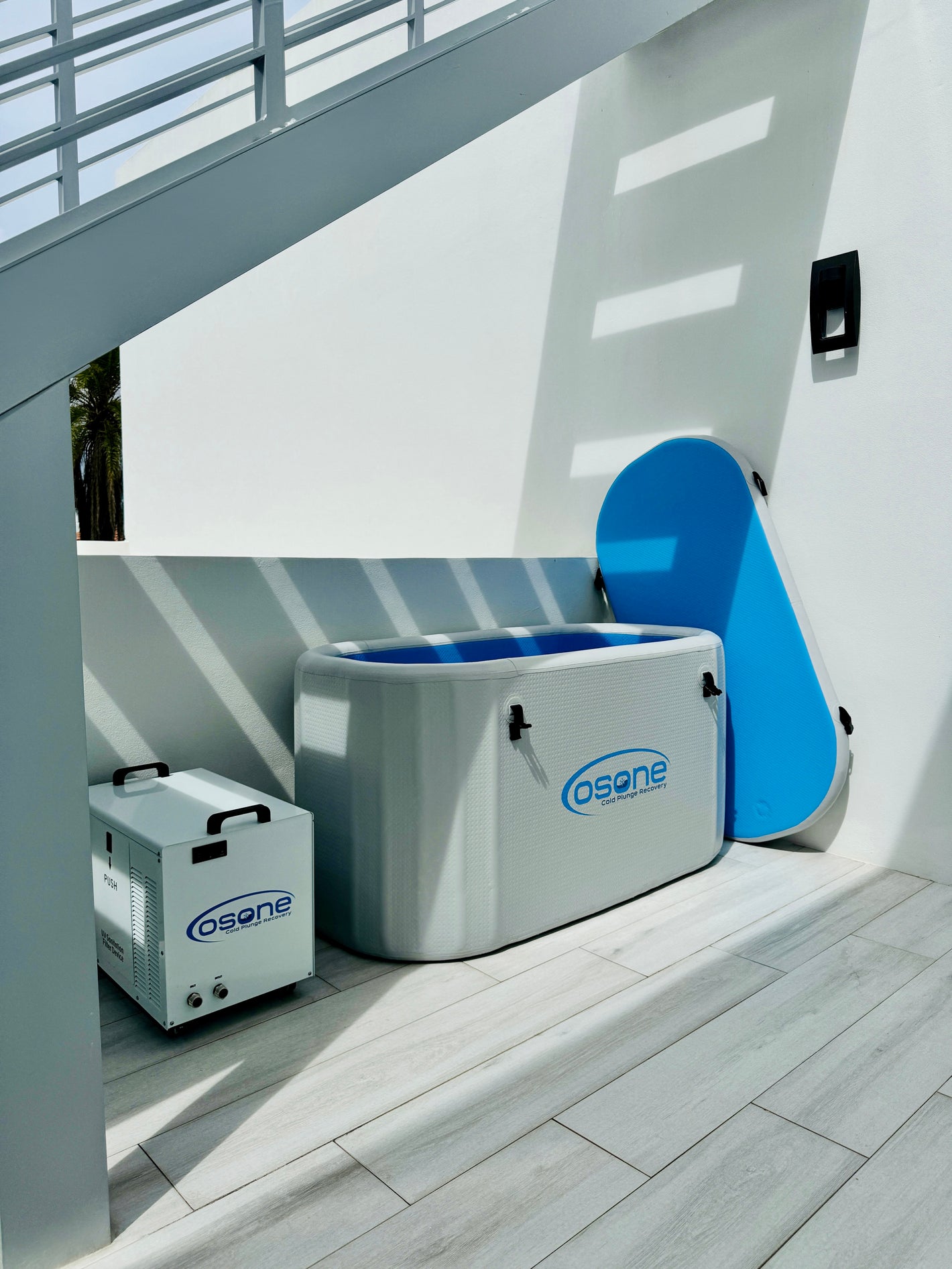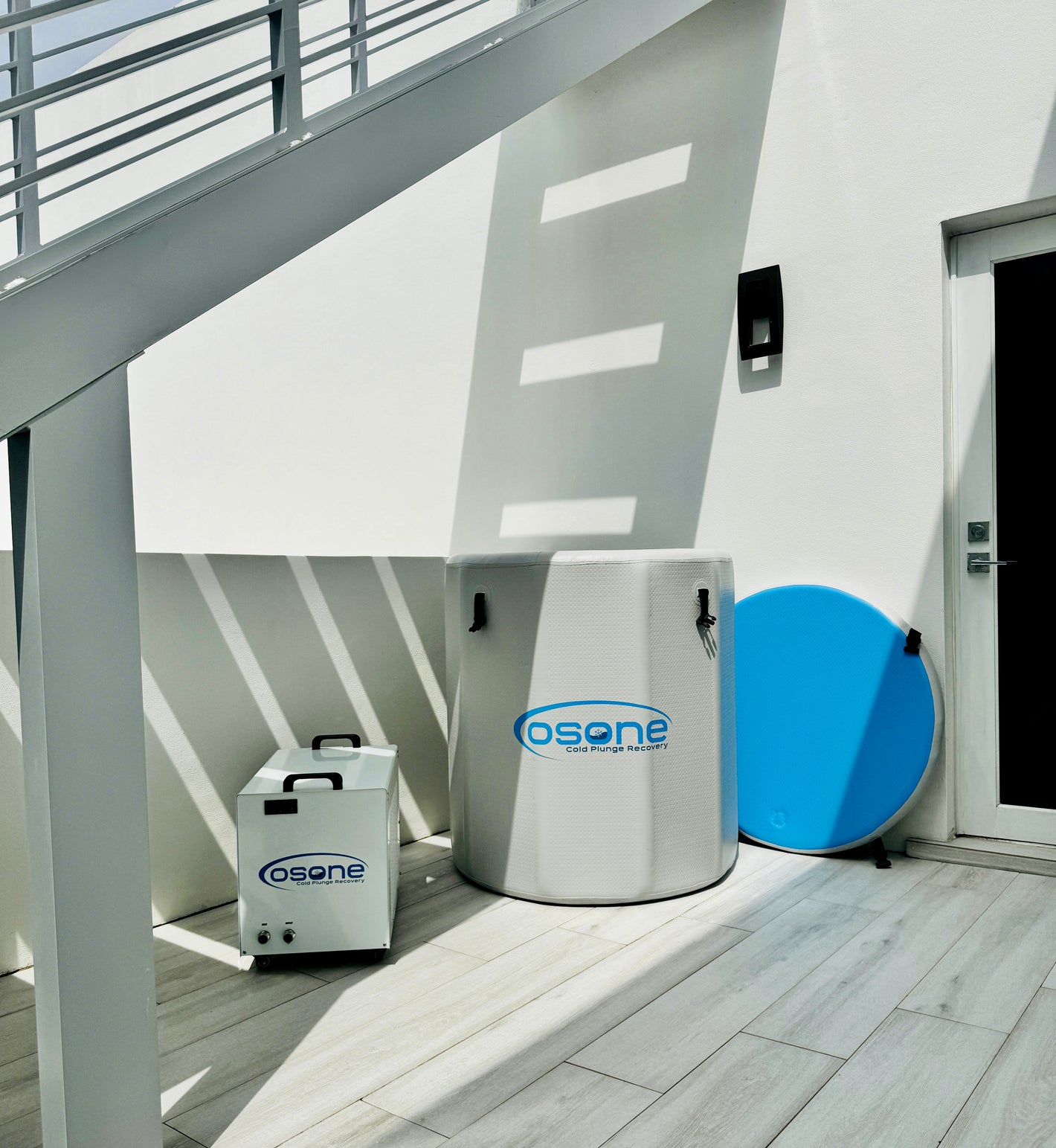For those new to Cold Plunge or those having difficulty adjusting to the routine, the primary focus should be on gaining control over the body’s initial shock response. You've heard the quote, "getting started is the hardest part". This phrase sounds true especially when it comes to cold exposure as the body needs time to adjust.
The first minute is honestly the hardest. If you can sustain the first 60 seconds, you will surprise yourself on how quickly your body responds thereafter.
In this article, we will explore 6 different breathing techniques to help settle into cold exposure. Effective breathing techniques can make all the difference in helping people adjust to cold exposure, improving their experience and ensuring safety. We will also differentiate between approaches suitable for beginners and more advanced techniques practiced by experts.
Why Breathing is Crucial During Cold Plunging
The body’s immediate reaction to cold exposure is a physiological stress response. This includes the “cold shock” response, marked by rapid, shallow breathing, increased heart rate and heightened alertness. While this is a natural response, learning to regulate breathing can help manage the shock and turn the cold experience into a therapeutic practice.
Controlled breathing:
- Activates the parasympathetic nervous system, helping calm the body.
- Enhances oxygen flow, which is essential during physical stress.
- Helps maintain mental focus, reducing anxiety caused by the cold.
- Can regulate heart rate, leading to greater control over your experience.
Let’s dive into some key techniques, starting with those best for beginners before exploring advanced methods suited for experienced practitioners.
Breathing Techniques for Beginners
For those new to cold plunge, the primary focus should be on gaining control over the body’s initial shock response. You've likely heard the quote, "getting started is the hardest part". This phrase sounds true especially when it comes to cold exposure. The body needs time to adjust. Anything good never came easy. The first minute is honestly the hardest. If you can sustain the first 60 seconds, you will surprise yourself on how quickly your body responds thereafter. Here are some beginner-friendly breathing techniques to help settle into cold exposure:
1. Box Breathing (4-4-4-4)
Description: Box breathing is a simple and effective technique that helps bring the mind and body into a calm, steady state. It’s named for its four steps, each lasting four seconds.
How to do it:
- Inhale deeply through your nose for 4 seconds.
- Hold the breath for 4 seconds.
- Exhale slowly through your mouth for 4 seconds.
- Hold your lungs empty for 4 seconds.
- Repeat.
Why it works for beginners:
- It promotes mindfulness and control which is key when the cold shock sets in.
- The structured pattern of breathing helps slow down the rapid, shallow breaths that often come with the cold shock response.
- Box breathing keeps you grounded and encourages relaxation even when your body is exposed to extreme temperatures.
Beginners should start practicing box breathing before entering the water to familiarize themselves with the technique, then implement it as soon as they enter the cold plunge.
2. Diaphragmatic Breathing
Description: Diaphragmatic breathing (or belly breathing) emphasizes deep breaths from the diaphragm rather than shallow breaths from the chest. This technique helps maximize oxygen intake and promotes calmness.
How to do it:
- Sit upright, with your hands on your abdomen.
- Take a deep breath in through your nose, focusing on expanding your belly as your diaphragm lowers.
- Hold the breath for a moment, then exhale slowly through your mouth, feeling your belly contract.
- Repeat.
Why it works for beginners:
- Belly breathing activates the parasympathetic nervous system, counteracting the stress response from the cold.
- It helps keep breaths deep and controlled, avoiding hyperventilation, which is common during cold exposure.
- Diaphragmatic breathing enhances the body’s oxygen supply, making it easier to cope with the cold.
For beginners, diaphragmatic breathing can help maintain a steady flow of oxygen, preventing panic and ensuring they adapt more smoothly to the cold.
3. Extended Exhales
Description: This technique focuses on extending the duration of your exhales to signal relaxation to your body.
How to do it:
- Take a deep breath in through your nose for a count of 4 seconds.
- Exhale through your mouth for 6 to 8 seconds, making the exhale longer than the inhale.
- Repeat the process.
Why it works for beginners:
- The longer exhale stimulates the vagus nerve, promoting calmness and reducing the feeling of stress.
- This method is ideal for counteracting the instinct to hyperventilate in cold water.
- It helps maintain focus and reduce anxiety, making the cold experience more manageable.
Extended exhale breathing is a great tool for beginners to override the body’s cold shock response and maintain a sense of control.
Breathing Techniques for Experienced Cold Plungers
For those who have already become accustomed to the cold, the focus shifts from managing the shock response to deeper physiological control and enhancing the benefits of the cold plunge. Experienced cold plungers can use advanced techniques to regulate their body’s responses at a higher level, explore meditative states, and maximize the benefits of cold therapy.
1. The Wim Hof Method
Description: The Wim Hof Method is a powerful breathing technique designed to increase oxygen levels in the body, influence the autonomic nervous system, and improve tolerance to extreme cold. This method combines deep, rhythmic breaths with breath retention.
How to do it:
- Take 30 to 40 deep breaths: Inhale fully through the nose or mouth, then let the air out without forcing it.
- After the last exhale, hold your breath (breath retention) until you feel the need to breathe.
- When the urge arises, inhale deeply and hold the breath for about 10 to 15 seconds.
- Exhale, and repeat the cycle 3-4 times.
Why it works for experts:
- This technique hyper-oxygenates the body, preparing it for the cold and reducing the immediate shock response.
- Breath retention trains the body to withstand discomfort, allowing the practitioner to stay in the cold plunge for longer periods.
- The method can induce a meditative state, enhancing the mental and emotional benefits of cold plunging.
The Wim Hof Method is best suited for experienced cold plungers due to its intensity and the high level of body awareness it requires.
2. Tummo Breathing
Description: Tummo breathing is a Tibetan meditation practice designed to generate inner heat. It combines deep breathing with visualization and breath retention, allowing the practitioner to withstand extreme cold while maintaining comfort.
How to do it:
- Take deep, powerful breaths, filling the lungs completely.
- Hold the breath while visualizing warmth and energy rising from your core.
- Exhale fully, and repeat.
Why it works for experts:
- This technique emphasizes the mind-body connection, allowing practitioners to influence their body temperature through focused intention.
- Tummo breathing helps in controlling energy and circulation, which is especially useful during prolonged cold exposure.
- It is a meditative practice that can elevate cold plunging into a spiritual or transformative experience.
Tummo breathing is recommended for advanced practitioners who have developed a strong understanding of breath control and a high tolerance to cold exposure.
3. Cyclic Hyperventilation
Description: This technique involves short bursts of deep breathing followed by breath holds, similar to the Wim Hof Method but with shorter intervals and a more rapid pace.
How to do it:
- Take deep, quick breaths for about 10 to 15 cycles.
- After the last exhale, hold the breath until you feel discomfort.
- Resume normal breathing, and repeat the process.
Why it works for experts:
- Cyclic hyperventilation quickly elevates oxygen levels, enabling the body to endure cold exposure more easily.
- This technique builds resilience against stress, increasing the duration of cold plunges.
- It also provides a quick “reset” during intense plunges.
This technique is effective for experts looking for a quicker way to boost resilience during cold plunging, but it requires practice to avoid dizziness.
Cold plunging offers numerous benefits, but it can be a challenging practice, particularly for beginners or those looking to challenge themselves to lower temperatures/longer timeframes of cold exposure. By incorporating specific breathing techniques, individuals at every experience level can ease into the cold, control their physiological responses, and enhance their overall experience.
Beginners can start with simple techniques like box breathing and diaphragmatic breathing to control their response to the cold. As they grow more accustomed, they can explore advanced methods like the Wim Hof Method and Tummo breathing, which not only help control the body’s response to cold but also elevate the experience into a deeply meditative practice. Breathing is one of the keys to mastering cold plunging, transforming it from an uncomfortable activity into a powerful tool for well-being.

